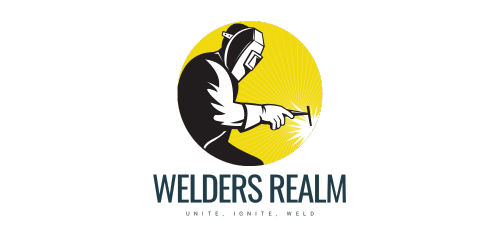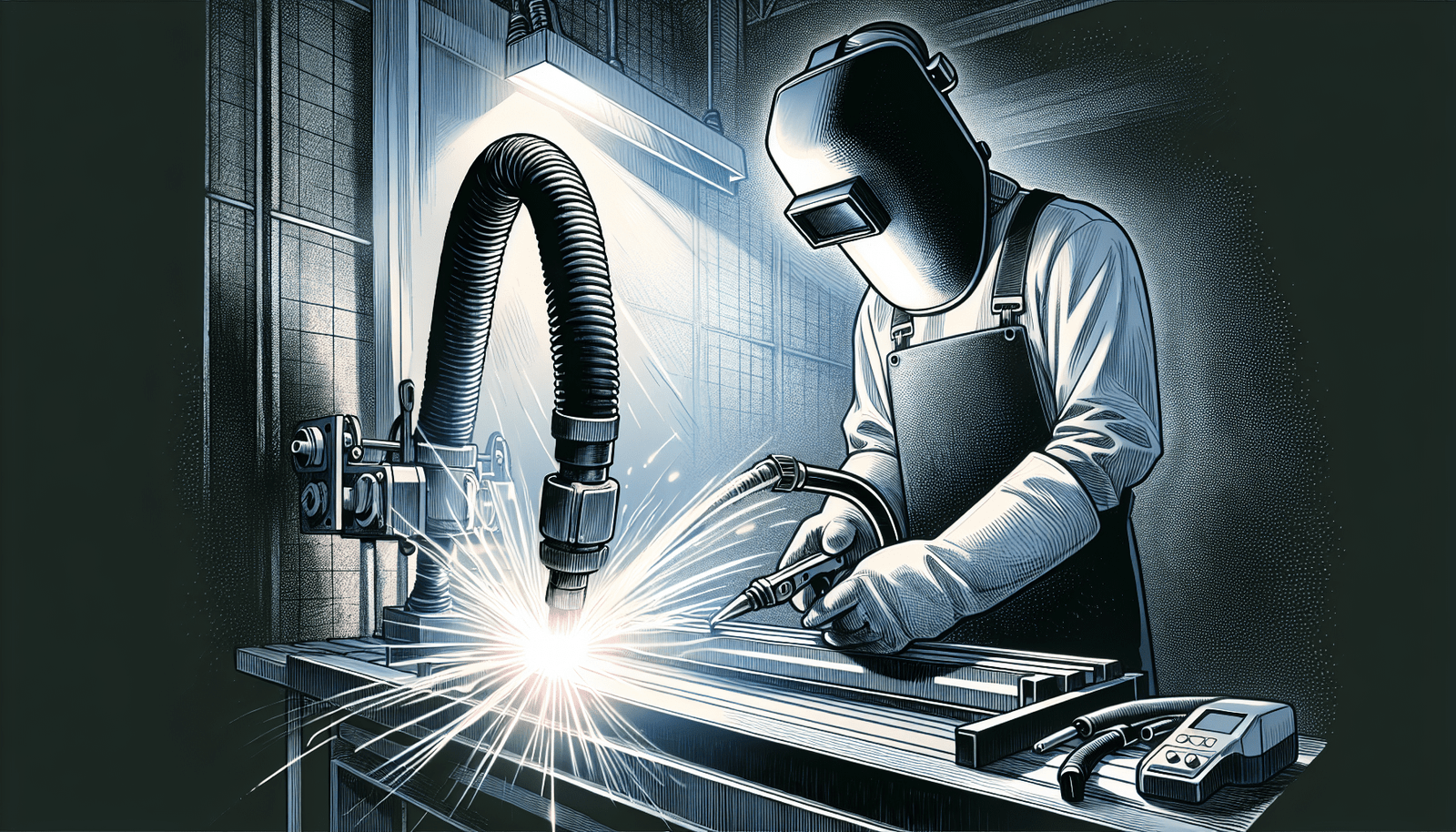If you’re a welding enthusiast looking to learn how to weld a motorcycle frame, you’ve come to the right place! In this article, we’ll provide you with valuable information and answers to frequently asked questions about motorcycle frame welding. Whether you’re a seasoned professional or just starting out, our goal is to make this process approachable and easy to understand. So get ready to dive into the world of motorcycle frame welding, and by the end, you’ll be equipped with the knowledge and confidence to tackle your welding projects with ease. Don’t forget to check out our online shop for all your welding needs!
Understanding Motorcycle Frame Structure
Motorcycle frames play a crucial role in the overall performance and safety of the bike. They provide the structural foundation that holds all the other components together, including the engine, suspension, and wheels. Understanding the different aspects of motorcycle frame structure is essential for anyone involved in welding or working on motorcycles.
Importance of the Motorcycle Frame
The motorcycle frame serves as the backbone of the bike. Its primary function is to provide support and stability, ensuring that the entire bike remains structurally sound. A well-designed and properly welded frame can enhance the bike’s handling, durability, and overall performance. It also plays a crucial role in absorbing and distributing the forces generated during various riding conditions, such as acceleration, braking, and cornering.
Common Materials Used in a Motorcycle Frame
Motorcycle frames are typically made from various materials. These include steel, aluminum, and sometimes even carbon fiber. Each material has its own unique characteristics and properties that affect the strength, weight, and overall ride quality of the motorcycle. Steel frames are known for their durability and strength, while aluminum frames offer lightweight advantages. Carbon fiber frames are reserved for high-performance motorcycles due to their exceptional strength-to-weight ratio.
Common Types of Motorcycle Frames
There are several types of motorcycle frames commonly used in the industry. The most common ones include the diamond, twin-spar, backbone, and perimeter frames. The diamond frame is the traditional and most widely used design, known for its simplicity and strength. Twin-spar frames offer improved rigidity and weight distribution, making them popular for sport and performance bikes. Backbone frames, as the name suggests, have a central backbone running from the steering head to the swingarm pivot. Perimeter frames provide excellent torsional rigidity and are commonly found in sport bikes.
Base Knowledge about Welding
Before diving into welding a motorcycle frame, it is essential to have a basic understanding of welding principles and techniques. Welding is a process of joining two or more metal pieces together using high heat and creating a strong bond. Safety measures and proper equipment are crucial to ensure successful and safe welds.
Basic Principles of Welding
Welding involves melting the base metal and adding a filler material to create a bond. The heat generated during the welding process causes the metals to fuse together, forming a solid joint. Two of the fundamental welding principles are heat control and proper penetration. Heat control ensures that the metal doesn’t overheat or warp, while proper penetration ensures a strong and reliable weld.
Safety Measures to Observe During Welding
Welding can be a hazardous process, so it is vital to prioritize safety. Always wear appropriate personal protective equipment (PPE), including a welding helmet, gloves, and flame-resistant clothing. Ensure proper ventilation in the workspace to avoid inhaling harmful fumes. Keep a fire extinguisher nearby and be cautious of flammable materials. Regularly inspect and maintain welding equipment to prevent accidents.
Required Equipment for Welding
To weld a motorcycle frame, certain equipment is necessary. The primary tool is a welding machine, such as a MIG, TIG, or arc welder, depending on the desired welding method. Welding consumables like electrodes or filler rods, a welding torch, and a welding helmet are also essential. Additionally, clamps and vices assist in holding the frame securely during the welding process.
Different Types of Welding Methods
There are several welding methods commonly used for motorcycle frame welding. The most popular ones are MIG (Metal Inert Gas) welding, TIG (Tungsten Inert Gas) welding, arc/stick welding, and flux core welding. MIG welding is known for its ease of use and versatility, making it suitable for beginners. TIG welding offers precise control and produces high-quality welds, but it requires more skill. Arc/stick welding is a traditional method that is reliable and efficient. Flux core welding, similar to MIG welding, uses a flux-cored wire that shields the weld from contaminants.
Preparing for Welding
Proper preparation is vital to ensure a successful welding process and a strong motorcycle frame. This includes setting up a suitable welding workspace, choosing the appropriate welding method, and preparing the frame itself.
Setting up Your Welding Workspace
Create a dedicated and well-ventilated workspace for welding. Remove any flammable materials or clutter that could pose a safety risk. Use a welding table or workbench with clamps or vices to hold the frame securely during welding. Ensure proper grounding of the welding machine to prevent electric shocks.
Choosing the Appropriate Welding Method
Consider the type of motorcycle frame, the materials used, and your skill level when choosing the welding method. MIG welding is a popular choice for beginners and general-purpose welding. TIG welding is suitable for precise and high-quality welds, commonly used in professional settings. Arc/stick welding is versatile and reliable, while flux core welding is ideal for outdoor welding and heavy-duty applications.
Preparing the Motorcycle Frame
Before welding, it is crucial to clean the frame thoroughly to remove any dirt, grease, or paint that could affect the quality of the weld. Use appropriate cleaning solvents and tools to ensure a clean and bare metal surface. Remove any components or parts that might be damaged by heat during the welding process. Clamp or secure the frame in the desired position for welding.
Material Selection for Welding Motorcycle Frames
Selecting the right materials for welding motorcycle frames is essential to ensure the strength and durability of the final weld.
Types of Welding Rods to Use
Welding rods, or electrodes, are the filler material used in welding. The choice of welding rods depends on the type of metal being welded and the welding method. For welding steel frames, commonly used welding rods include E6010, E6011, E6013, and E7018. Each type of electrode has its own characteristics, such as penetration depth and resistance to cracking, which should be considered when selecting the appropriate rod.
Selecting the Right Shielding Gas
When using MIG or TIG welding methods, shielding gas is essential to protect the weld from atmospheric contamination. The choice of shielding gas depends on the base metal and the desired welding characteristics. Common shielding gases include argon, helium, and carbon dioxide. Each gas has different properties that affect the weld quality, such as arc stability and heat transfer.
Choosing the Right Filler Material
The filler material used in welding motorcycle frames is crucial for achieving strong and reliable welds. The choice of filler material depends on the base metal and the welding method. Common filler materials for steel frames include ER70S-6 and ER70S-2, which are mild steel wires. Aluminum frames require aluminum filler wires, such as ER4043 or ER5356. It is important to match the filler material to the base metal for compatible welding.
Process of Welding a Motorcycle Frame
Welding a motorcycle frame requires precision and attention to detail. Following a systematic process ensures a successful weld and a structurally sound frame.
Marking the Welding Points
Before welding, mark the areas on the motorcycle frame where the welds will be made. Use a marker or soapstone to create clear and visible lines for guidance. This helps ensure accurate and consistent weld placement.
Tricks for Steady Hand Movement
Steady hand movement is crucial for creating neat and strong welds. To improve hand stability, rest your hands or forearms on a comfortable support, such as a workbench or welding table. Practice maintaining a firm grip and smooth motion to minimize unwanted weld distortions.
Professional Tips on Handling the Welding Torch
Proper handling of the welding torch is essential for achieving quality welds. Hold the torch with a comfortable grip, ensuring a steady and controlled motion. Position the torch at the correct angle and distance from the workpiece, as recommended for the specific welding method. Maintain a consistent travel speed to create uniform welds throughout the frame.
Common Welding Techniques
Different welding techniques can be used to weld motorcycle frames, depending on the desired strength and aesthetics.
MIG Welding Technique
MIG welding, also known as GMAW (Gas Metal Arc Welding), is a popular technique for welding motorcycle frames. It involves feeding a continuous wire electrode through a welding gun while an inert shielding gas protects the weld from contamination. MIG welding is known for its speed, ease of use, and versatility.
TIG Welding Technique
TIG welding, also known as GTAW (Gas Tungsten Arc Welding), is a precise and high-quality welding technique. It uses a non-consumable tungsten electrode to create an electric arc that melts the base metal. A separate filler rod is added manually to create the weld. TIG welding produces clean and aesthetically pleasing welds with excellent control over the heat input.
Arc/Stick Welding Technique
Arc or stick welding is a traditional and reliable welding technique commonly used for welding motorcycle frames. It uses a consumable electrode coated in flux to create a shield around the weld. Arc welding is known for its versatility, ability to handle thicker metals, and outdoor welding capabilities.
Flux Core Welding Technique
Flux core welding is similar to MIG welding, but it uses a flux-cored wire instead of a solid wire electrode. The flux core acts as a shielding gas, allowing for outdoor welding and providing better penetration on thicker metals. Flux core welding is known for its efficiency and deep penetration capabilities.
Post-Welding Tasks
After completing the welding process, several essential tasks must be carried out to ensure the quality and integrity of the motorcycle frame.
Allowing the Frame to Cool Down
After welding, it is crucial to allow the frame to cool down slowly to avoid stress and potential distortions. Avoid quenching or rapidly cooling the welded areas, as it can lead to brittleness and weaker welds. Natural air cooling is the best approach, ensuring proper temperature distribution in the frame.
Cleaning the Welding Slag
Welding slag is the residue left behind after welding, typically in the form of a hardened layer on the surface of the weld. Cleaning the welding slag is essential to inspect the quality of the weld and prepare the frame for further finishing or painting. Use appropriate tools and techniques to remove the slag without damaging the weld.
Inspecting the Welded Sections for Any Imperfections
After cooling and cleaning, carefully inspect the welded sections of the motorcycle frame for any imperfections. Look for cracks, inconsistencies, or weak welds that might compromise the frame’s structural integrity. If any issues are found, they should be addressed immediately by re-welding or seeking professional assistance.
Common Problems and Solutions in Motorcycle Frame Welding
Despite taking all necessary precautions, welding motorcycle frames can sometimes present challenges. It is essential to be prepared to handle common problems that may arise.
What to Do When the Weld Does Not Penetrate
If the weld does not penetrate the metal properly, it may result in weak or incomplete joints. This can occur due to various factors, such as insufficient heat or improper welding technique. If this happens, the solution is to assess the welding parameters, increase the heat input or weld size, and ensure proper penetration during re-welding.
Dealing with Welding Splatter
Welding splatter refers to the small molten metal particles that can be dispersed during the welding process. It can create unwanted marks or blemishes on the frame’s surface. To minimize or eliminate splatter, ensure proper electrode or wire settings, use anti-spatter sprays or compounds, and maintain the correct welding technique.
Overcoming Warping of the Frame Due to Heat
During welding, the intense heat can cause the frame to warp or distort if not properly controlled. To minimize warping, use proper clamping techniques to secure the frame during welding. Employ preheating or post-weld heat treatment methods, if necessary, to relieve residual stress. If warping occurs, it may require corrective measures like cold straightening or re-welding affected areas.
Maintaining Your Welding Tools and Equipment
Proper maintenance of welding tools and equipment is crucial for their longevity and optimal performance.
Cleaning Your Welding Equipment
Regularly clean your welding equipment to remove dirt, dust, and welding residue. Use appropriate cleaning agents and tools to ensure the equipment remains free from contaminants. Keep consumables, such as welding rods or electrodes, dry and in sealed containers to prevent moisture and corrosion.
Proper Ways of Storing Welding Rods
Welding rods should be stored properly to maintain their quality and prevent damage. Store them in a dry and moisture-free environment to avoid rust or degradation. Use a rod oven or airtight containers to maintain the desired temperature and humidity levels. Inspect rods periodically for any signs of damage or degradation.
Lifespan of Welding Equipment
The lifespan of welding equipment depends on various factors, including the quality of the equipment, frequency of use, and maintenance practices. With proper care and regular maintenance, welding machines, torches, and other equipment can last for many years. However, it is crucial to monitor their performance and replace any worn-out or faulty components promptly.
Welding Certifications and Training
For those interested in pursuing welding as a profession, obtaining proper certifications and training is essential.
The Importance of Getting Certified
Welding certifications validate a welder’s skills and expertise, making them more desirable for employment opportunities. Certifications also provide a standard benchmark for employers to assess a welder’s capabilities and ensure quality workmanship. Obtaining certifications demonstrates a commitment to professionalism and can lead to better career prospects in the welding industry.
Where to Obtain Welding Training and Certifications
There are various institutions, schools, and training centers that offer welding courses and certifications. Local community colleges, technical schools, and vocational training centers often provide comprehensive welding programs. Additionally, professional welding organizations and institutes offer specialized training and certifications for specific welding methods and industries.
Continuous Education Opportunities for Welders
The field of welding is constantly evolving, with new technologies and techniques emerging. Continuous education and skills enhancement are essential for welders to stay updated with the latest practices and trends. Attend seminars, workshops, or online courses to expand your knowledge and refine your welding skills. Engage with professional welding communities and organizations to stay connected with industry advancements and opportunities.
In conclusion, understanding motorcycle frame structure and the process of welding a motorcycle frame is crucial for anyone involved in working on motorcycles. By familiarizing yourself with the importance of the motorcycle frame, common materials used, and different welding techniques, you can ensure the strength, durability, and overall performance of the motorcycle. Additionally, adhering to safety measures, preparing properly, and maintaining your welding tools and equipment will lead to successful welds and a satisfying welding experience. With the right knowledge, skills, and certifications, you can confidently work on motorcycle frames and contribute to the world of motorcycle customization and repair.





